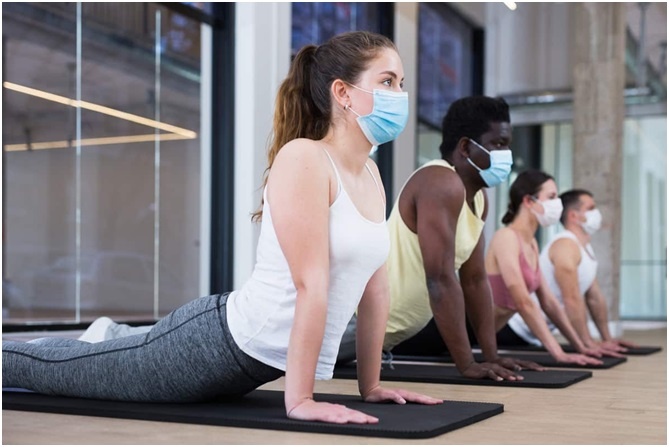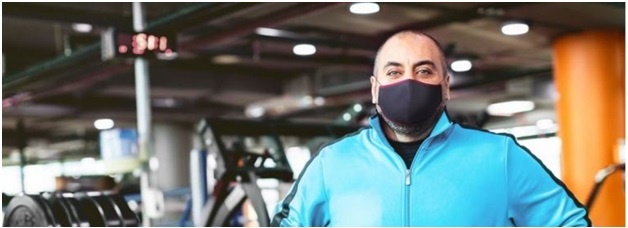
How did the Yoga Industry in Australia Respond to COVID-19?
Like other businesses, the Yoga Industry in Australia faced the challenges posed by COVID-19. Yoga studios made various adaptations and innovations, making good profits by offering classes online.
The challenge continues and yoga teachers now have their classes via the mode of streaming live from their studios.
Find the fitness industry of Australia and report on the impact of COVID-19 on yoga studios.
According to the survey by IBIS World, there were 3,562 Pilates and Yoga Studio businesses in Australia as of 2024, an increase of 3.5% from 2023.
Table of Contents
Who were the most affected by COVID?

Following yoga teachers had the worst impact of COVID on their yoga studios:
- Those teachers who were dependent on physical classes
- Who used to take yoga retreats and taught yoga outside the classroom
- Teachers who preferred the traditional method of teaching
- Who never wants to go online or learn and specialize in video streaming of classes
- Those who paid rent and couldn’t afford it due to lockdowns
Challenges faced by yoga teachers
According to the survey, the following challenges are faced by yoga teachers:
- Have significantly reduced hours of teaching
- Many have stopped teaching
- There are fewer students now
- Moving to teaching on YouTube is now becoming a competition.
- Many feel good to connect with students online at a vast scale of area and to cope with the challenges
Yoga Industry in Australia – Respond to COVID-19

According to IBIS World’s survey that constantly monitor the industry impacts of current events in real-time, periods of studio closures and capacity restrictions in response to the COVID-19 pandemic have slashed studio attendance numbers, leading to an expected annualised 3.5% slump in revenue through the end of 2023-24, to $701.9 million.
A drop in household discretionary income is also causing revenue to sink by 2.7% in 2023-24 alone.
The emergence of a wider range of yoga and Pilates methods is projected to boost the industry’s revenue over the next five years.
While price competition is high, studio differentiation and increased sophistication of services will likely justify some price increases over the period. Demand for industry services, particularly niche services, is forecast to grow over the next five years, allowing the industry to expand.
Revenue is poised to return to growth over the coming years as economic conditions improve, and in-person class participation rises.
Studios are on track to recover from the adverse effects of the COVID-19 pandemic rapidly.
Teaching Online

Teaching online yoga is a blessing in disguise for yoga studios. Many teachers now take live-streaming yoga classes on Zoom, YouTube and Skype. For many who had never thought of reaching so many students worldwide, it’s been a blessing in disguise.
Most of the students now prefer online workouts.
Virtual classes have become a powerful tool for engaging old and new students. Yoga teachers who love teaching online have created a virtual, physical studio-like atmosphere, which attracts the most students or customers.
[How yoga businesses are adapting online?]
This shows that the biggest advantage is that even when it was thought that no option was left to teach yoga due to COVID, most yoga teachers took to virtual platforms. In Australia, 60% of students love to do yoga online.
The online classes are split into pre-recorded YouTube videos, live streaming of classes, video on demand, and specific yoga to teach online.
Virtual classes are easy to join, flexible in schedules, and motivational for yoga teachers who are still struggling to cope with growth in their yoga businesses.
What Yoga Teachers Need To Learn
- Learn how to teach online yoga
- Adapt to new ways of teaching and doing business.
- Learn the basic technical skills and marketing strategies
- Find out how to charge for yoga classes, from free to memberships.
- Adapt to multiple tasks besides teaching yoga.
- Add variety to yoga class.
- Take hybrid lessons, which include both online and physical classes.
- Explore new opportunities and side business to grow financially
- Stay motivated and find the latest trends in Yoga
- Connection with the Yoga community to grow your business
Best Practices To Follow

- All yoga classes can be capped at 20 to 30 students.
- Bookings must be made prior via a booking app like KRIYA or any other you use.
- Cancellations must be made no less than 3 hours before the scheduled start time of the class.
- Yoga studios may ask for vaccination certificates.
- You must show the Covid-19 vaccination mandate by linking your vaccination certificate to the government App.
- If you have flu-like symptoms, you must wear masks at the studio. You may remove them only when you are on your yoga mat.
- Try to bring your own yoga mat and props; if you use the studio ones, clean them after each use.
- Do not come to class if you are unwell or have been caring for someone unwell.
Current NSW guidelines for yoga and fitness studios

- Anyone can participate in sports, exercise, and outdoor gatherings.
- Customers are not required to be fully vaccinated or carry vaccination evidence.
- Customers and staff must follow the face mask rules.
- Businesses are no longer required to have a COVID-19 Safety Plan. Optional COVID-19 Safety Plans are available to help businesses keep a safe environment for staff and customers.
- Gyms and indoor recreation facilities can operate without person or capacity limits, including for group fitness classes.
- COVID-19 Safe Check-in is still required at gyms using the Service NSW app, but this does not apply to dance, yoga, Pilates, gymnastics, or martial arts studios. If you wish to attend a dance, yoga, Pilates, gymnastics, martial arts studio, or swimming pool located inside a gym, you must check in when you enter the gym.
Sanitisation and Hygiene to be maintained
Regardless of whether you are fully vaccinated or not, you need to maintain good hygiene. You no longer need to show evidence that you are fully vaccinated at most premises in NSW. However, you still need to show evidence that you are fully vaccinated if you are asked for it.
Also, take good care of cleanliness and sanitation and follow the COVID guidelines prescribed by the Australian Health Department.
Conclusion
The COVID-19 pandemic presented significant challenges to the yoga industry. Yoga teachers are adopting new approaches to their yoga class and studio business.
While many factors influence the Yoga Industry, the future of yoga looks positive, with the biggest growth likely to be in online and virtual classes.
FAQs
Q1. How did the yoga industry in Australia adapt to the challenges posed by COVID-19?
The Yoga industry in Australia responded to COVID-19 by implementing various strategies such as transitioning to online classes, offering outdoor sessions, implementing hygiene protocols, and supporting instructors financially.
Q2. How did yoga instructors in Australia cope with the impact of COVID-19?
Yoga instructors in Australia faced challenges due to studio closures and reduced class attendance. Some studios and organizations offered financial support, such as grants or fundraising initiatives, to assist instructors during this difficult period.
Q3. Are students required to bring their equipment to the yoga class?
Yes, students are required to bring their equipment to studio classes to maintain sanitisation and hygiene.
Q4. What do yoga teachers need to learn now?
They need to learn the different online platforms for yoga classes, and to start an online business, they need to find the best booking systems.
